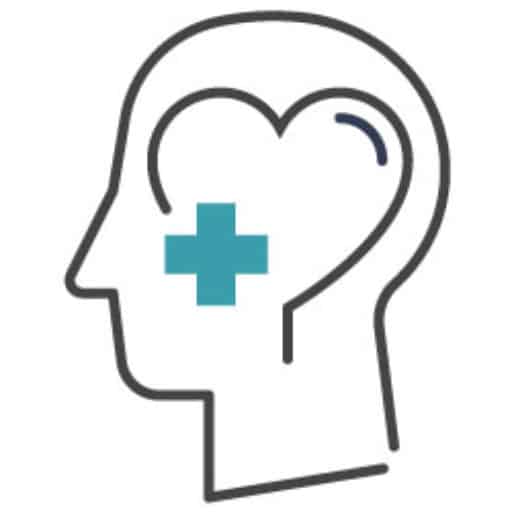Find out what to do if you or someone you love has been wondering, “Do I have PTSD?” Learn how to tell if you have PTSD by exploring its signs and symptoms.
Around 6% of adults in the United States will experience post-traumatic stress disorder (PTSD) at some point in their lives. Living through a traumatic event is typically the cause of the mental health disorder, but not everyone affected by trauma will develop it. If you’ve been wondering if you have PTSD, this guide will teach you how to take the first steps toward finding the answer.
Do I Have PTSD?: How to Tell If You Have PTSD
The truth is, it’s not possible to tell if you have PTSD on your own. Only a mental health professional can diagnose PTSD and develop a plan for treating it. However, understanding what PTSD is, what causes it and what its signs and symptoms are can help you determine whether to seek a professional diagnosis.
What Is Post-Traumatic Stress Disorder?
PTSD is a mental health disorder that usually develops after witnessing or being involved in a life-threatening or traumatic event or being close to someone who has. Examples of events that can contribute to PTSD include:
- War
- Natural disasters, such as a flood, volcanic eruption or an earthquake
- Fire
- Severe accident
- Witnessing the death or serious injury of someone
- Losing a loved one because of suicide or homicide
- Abuse or physical or sexual assault
Who Gets PTSD?
Although an estimated 61% to 80% of people will go through a traumatic event in their lives, the majority won’t develop PTSD. Some people are at an increased risk of developing it. For example, the prevalence of PTSD among veterans is slightly higher than the national average at 7%. Other risk factors for PTSD include:
- Experiencing a severe or long-lasting traumatic experience
- Suffering a physical injury during the traumatic event
- Having other mental health disorders, including anxiety and depression
- Lacking a strong support network
- Personal history of drug or alcohol abuse
- Going through trauma at a young age
- Family history of PTSD or other mental health disorders
How Do You Know If You Have PTSD?: Recognizing the Signs
Symptoms of PTSD generally fall into four categories:
- Intrusion. People with PTSD typically relive their experience over and over through nightmares, flashbacks and unpleasant memories.
- Avoidance. To prevent intrusive thoughts, people with PTSD often avoid people, places and things that remind them of their trauma.
- Reactivity. Many individuals with PTSD experience mood changes due to the trauma. They may become angry easily, be irritable or have difficulty concentrating.
- Alertness. Someone with PTSD may develop hypervigilance to danger and constantly be on high alert.
Keep in mind that the severity of PTSD symptoms and how much they impact daily life varies. Generally, symptoms begin within 3 months of the triggering event, but it can sometimes take years for a person to exhibit any signs of the condition.
Self-Assessment for PTSD
If you’re trying to learn how to tell if you have PTSD, a self-assessment can be a good starting point. While not a substitute for a professional diagnosis, self-tests can help you explore your symptoms and prepare you for conversations with a mental health provider.
Complete the following PTSD questionnaire, answering as honestly as you can.
- Have you experienced significant trauma as a child or an adult?
- Was the trauma something that happened to you, or did you witness the trauma?
- What happened following the traumatic experience? Were you injured? Did you have nightmares and difficulty falling asleep?
- Did you have a childhood trauma test? What about a trauma test or PTSD test?
- After the childhood trauma test, did you have professional treatment?
- How long after the childhood trauma test did treatment begin? How long did it last?
- In the past month, how bothersome have disturbing, unwanted and repeated memories of the traumatic experience been?
- Do you experience dizziness, sweating, upset stomach or a rapid heartbeat when reminders of the traumatic event occur?
- What about upsetting thoughts about the trauma? Do they pop into your mind and you don’t want to think about them?
- Think about the past month. Have you attempted not to think about the traumatic event, or did you avoid situations that could remind you of it?
- Are you often easily startled, on guard and vigilantly watchful?
- Do you feel detached or numb to your surroundings, people and activities?
- What about guilt or blame? Do you blame yourself or feel guilty that you couldn’t stop the trauma or problems that happened afterward?
Consider saving the answers to this PTSD test to show to a mental health provider if you choose to seek treatment.
Professional Diagnostic Tests for PTSD
As previously mentioned, only a mental health professional can tell you if you have PTSD. During your initial consultation, they may perform a number of tests to diagnose you.
Childhood Trauma Tests for PTSD
If your mental health care provider believes your PTSD symptoms may be due to a childhood event, they may utilize one of the following tests:
- Childhood trauma questionnaire. This test asks you to reflect on various aspects of your experiences as a child. It may explore topics like emotional, physical and sexual abuse, emotional and physical neglect and your home environment.
- Adverse Childhood Experience (ACE) test. This test assesses the level of trauma someone experienced in childhood, assigning a score that mental health professionals can use when diagnosing PTSD.
- Child and Adolescent Trauma Screen. A clinician administers this test, which uses a 30-item scale for PTSD based on the Diagnostic and Statistical Manual of Mental Disorders, Fifth Edition (DSM-5).
Structured Clinical Interviews for PTSD
Mental health professionals may also conduct an interview to diagnose PTSD. Some examples of this type of diagnostic tool include:
- Clinician-Administered PTSD Scale (CAPS). The National Center for PTSD created this trauma test, and it’s one of the most widely used tests for PTSD. During the interview, the clinician asks about the frequency and intensity of PTSD symptoms.
- Structured Clinical Interview for DSM (SCID). This screening tool can be used to diagnose PTSD and several mental health disorders.
- Treatment-Outcome Post-Traumatic Stress Disorder Scale (TOP-8). This interview includes just eight questions and can be used to both diagnose PTSD and monitor the success of treatment over time.
- Short PTSD Rating Interview (SPRINT). This introductory screening tool asks questions about each of the four symptom categories associated with PTSD.
- Primary Care PTSD Screen for DSM-5 (PC-PTSD-5). Primary care physicians can use this five-question interview to identify patients who may benefit from a referral to a mental health professional for a PTSD evaluation.
Take the First Steps Toward PTSD Recovery
Recovery from PTSD is possible with mental health treatment. Your treatment professionals will design a plan based on your symptoms, intensity, frequency, coexisting substance use, other mental health disorders and medical conditions. If you’re ready to get help for PTSD, our mental health experts at Restore Mental Health can help you navigate the next steps. Contact us to begin PTSD treatment and start finding relief from your symptoms.



